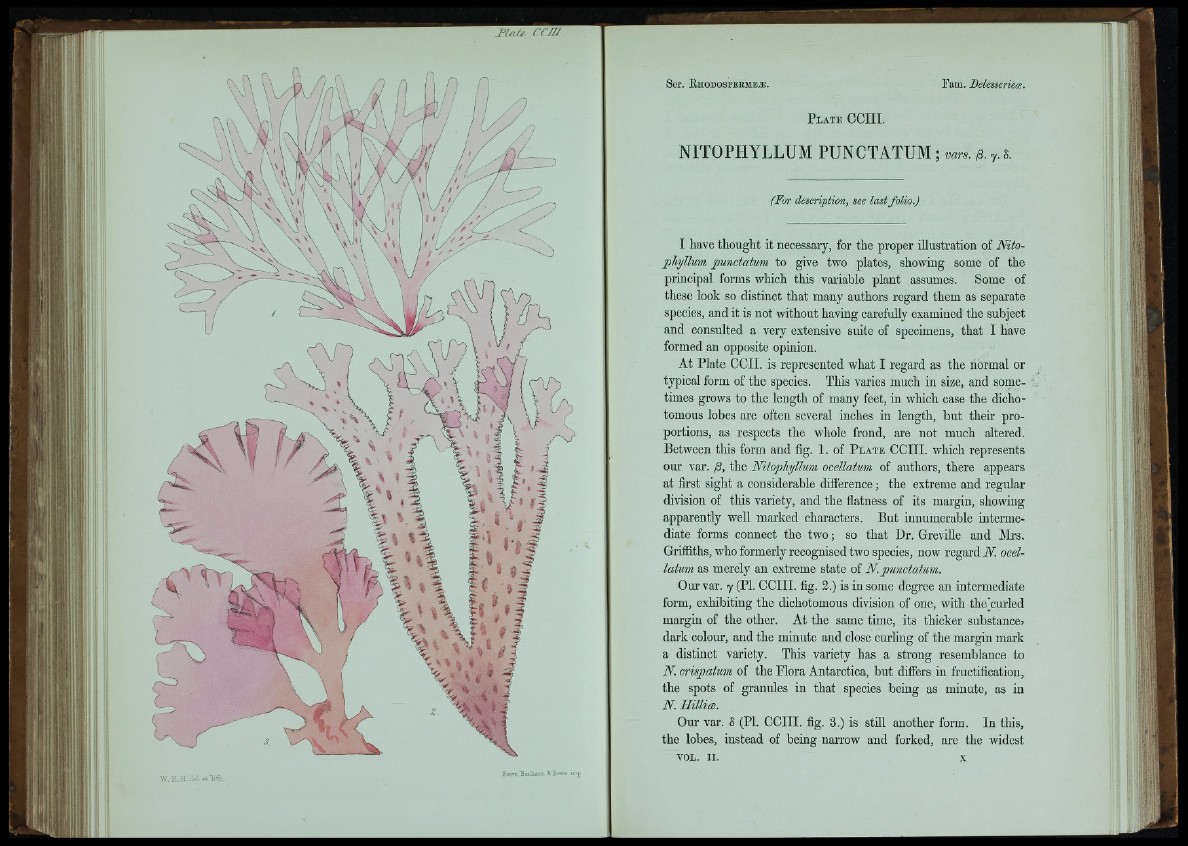
!;■! !'!
r i :
V/.H.H.ielrtTift-. SeevB.ïsxiliioev fcRieve.imp
P late CCIII.
NITOPHYLLUM PUNCTATUM ; vars. p. y. 8.
(For description, see last fo lio .)
I have thought it necessary, for the proper illustration of Nito-
pliyllum punctatum to give two plates, showing some of the
principal forms which this variable plant assumes. Some of
these look so distinct that many authors regard them as separate
species, and it is not without having carefully examined the subject
and consulted a very extensive suite of specimens, that I have
formed an opposite opinion.
At Plate CCII. is represented what I regard as the normal or
typical form of the species. This varies much in size, and sometimes
grows to the length of many feet, in which case the dichotomous
lobes are often several inches in length, but their proportions,
as respects the whole frond, are not much altered.
Between this form and fig. 1. of P late CCIII. which represents
our var. /3, the Nitophyllum ocellatum of authors, there appears
at first sight a considerable difference ; the extreme and regular
division of this variety, and the flatness of its margin, showing
apparently well marked characters. But innumerable intermediate
forms connect the two ; so that Dr. Greville and Mrs.
Griffiths, who formerly recognised two species, now regard N. ocellatum
as merely an extreme state of N. punctatum.
Our var. 7 (PI. CCIII. fig. 2.) is in some degree an intermediate
form, exhibiting the dichotomous division of one, with thejcurled
margin of the other. At the same time, its thicker substance»
dark colour, and the minute and close curling of the margin mark
a distinct variety. This variety has a strong resemblance to
N. crispatum of the Flora Antarctica, but differs in fructification,
the spots of granules in that species being as minute, as in
N. Hillioe.
Our var. S (PI. CCIII. fig. 3.) is still another form. In this,
the lobes, instead of being narrow and forked, are the widest
VOL. II. X